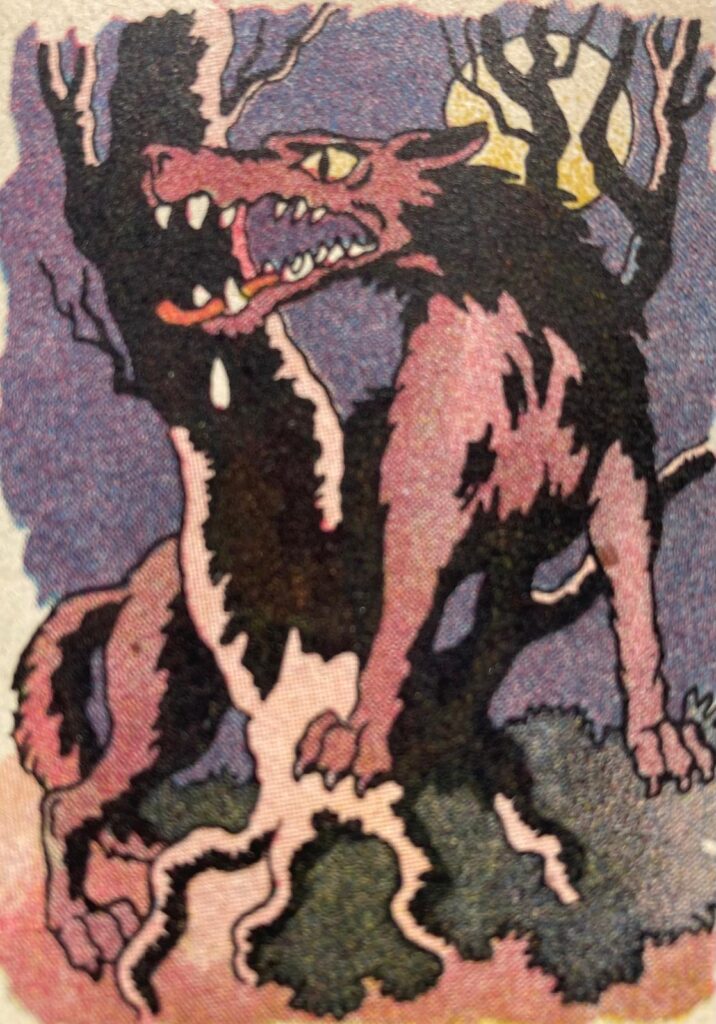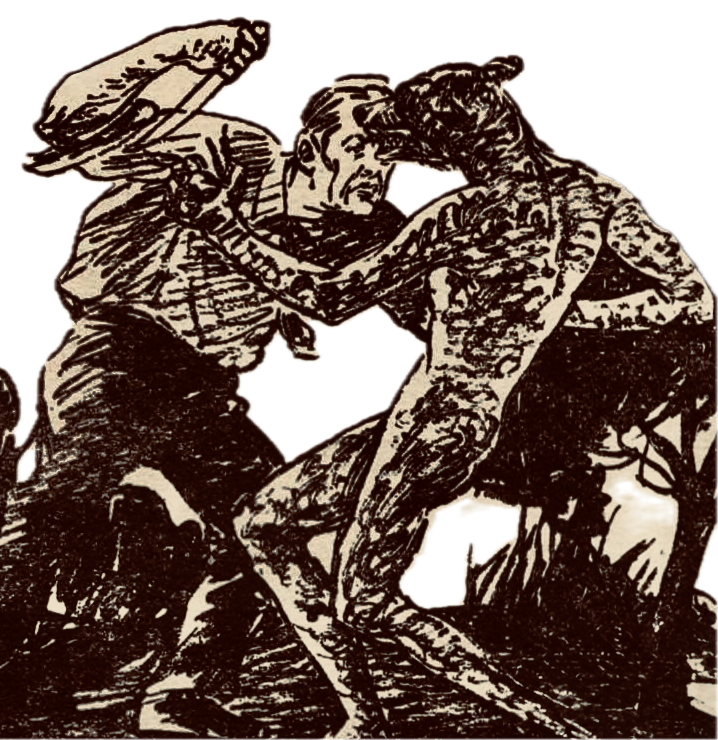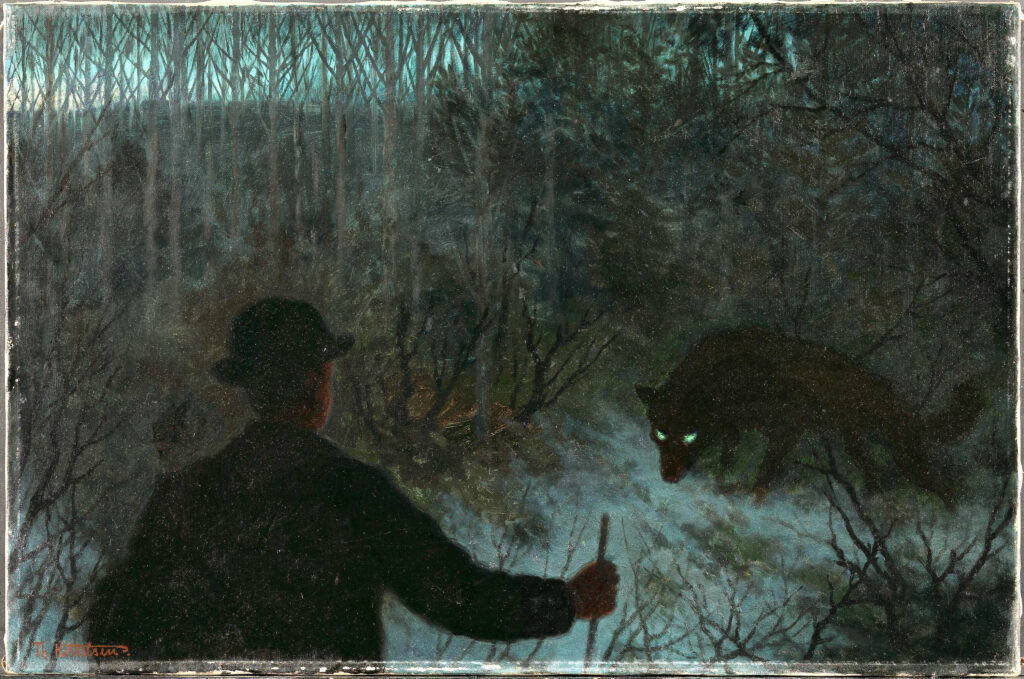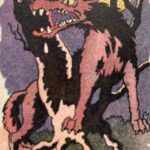I noticed that belief in the werewolf was deep and universal…All the wolves in the area are under its command and obey it with blind docility.– Alfred Legoyt
Home to some of the oldest werewolf legends in Europe, Auvergne could certainly be seen as a “werewolf country”. And in some mountain locales, belief in werewolves persisted well into the nineteenth century. Of course, not everyone was a believer. For many though, werewolves were real predators, fleshly emissaries of Satan who dwelt on the fringes of everyday life. Watchful montagnards knew that it could be costly to stray from the moonlit country lane. The werewolf was always waiting.

The following excerpt, taken from the letters of Claude-Louis-Basile Cornut (a priest who lived in Haute-Loire in the nineteenth century), provides some interesting details on Auvergne werewolf beliefs at the time:
Werewolves were men who had sold themselves to the Devil, who granted them the power to transform into wolves. It was during the night that they roamed the countryside, lying in wait near secluded paths, prowling around villages and small towns.
The country folk trembled with fear at the mere thought of encountering them. They howled like true wolves, savagely tore men apart, devoured sheep, dogs, and young children, and carried off women and girls.
It is said that our werewolves carefully hid their hide during the day. When someone was suspected of being a werewolf, people took advantage of his absence to search for his diabolical hide. If they managed to find it, they would thrust it with a pitchfork into a blazing oven, and the flames would not damage it. They then tried to hack it to pieces with an axe, but to no avail.

However, as soon as it was sprinkled with holy water, it would fall to tatters and disintegrate with a horrible crackling sound, leaving behind an extremely foul odour.
Less than thirty years ago, I was shown a man who was reputed to be a werewolf. He had an athletic build in his stocky frame, his face presented a repulsive overall appearance; his small, blinking, and rather lively eyes bore a distinct expression of deceit and cruelty — almost villainy, I would say; his deep, guttural, halting voice produced the effect of a wild beast’s cry. Everything about him fuelled the imagination of his neighbours against him; he lived deep in a forest, in a wild, terrifying place, and the name of his hamlet, harsh and rough, perfectly conveyed the horror of the site; he was known only for his strange and mysterious habits. Moreover, his well-established reputation was that of a dangerous man. Some neighbours sought to discover his hide, and they succeeded, it is said; but it slipped from their hands and fled with such astonishing speed that no one felt inclined to search for it again. I could name this alleged werewolf, his commune, and his hamlet… Since his death, we have had no other werewolf.
In the words of the American folklorist Charles G. Leland: “Minor local legends sink more deeply into the soul than greater histories.” To learn more about Clermont-Ferrand’s seemingly endless secrets and ghostlore, sign up for our newsletter below.





![Weird Tales v05 n01 [1925-01]_0095](https://visitauvergne.org/wp-content/uploads/2025/09/Weird-Tales-v05-n01-1925-01_0095-1-150x150.png)
![Weird Tales v05 n01 [1925-01]_0095](https://visitauvergne.org/wp-content/uploads/2025/09/Weird-Tales-v05-n01-1925-01_0095-150x150.png)
